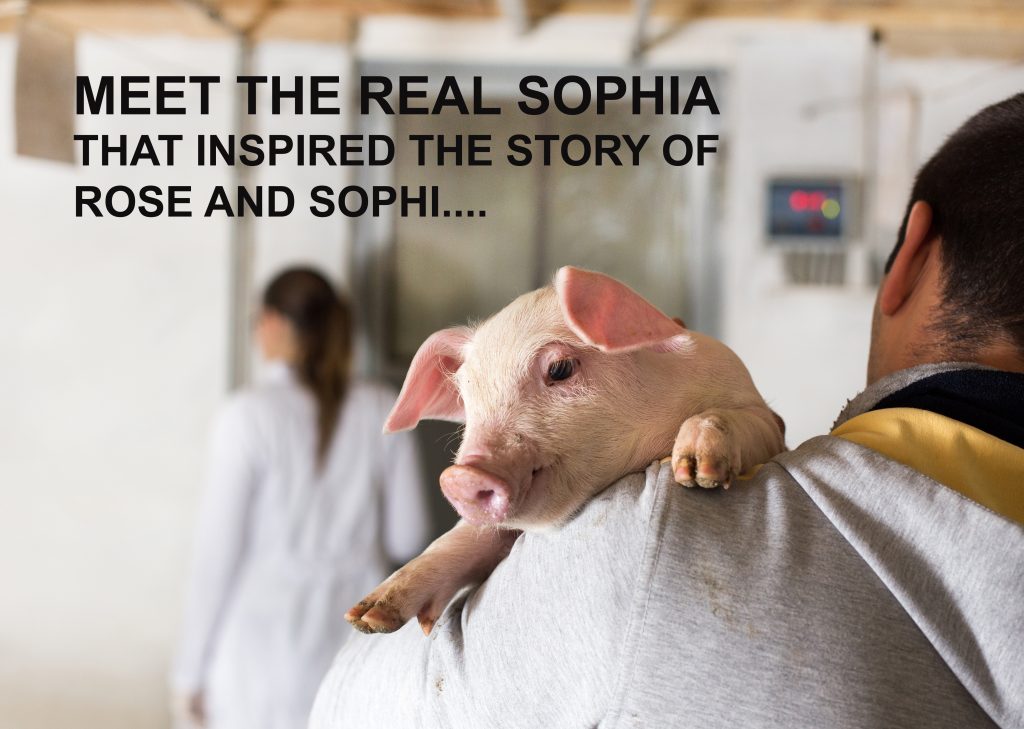Global Anti-Vivisection World Protest Event in Vancouver: April 27, 2024
On April 27, 2024, as part of the Global Anti-Vivisection World Protest being coordinated by TAVA, we will be conducting a live performance event that shares the story of two beagle dogs* bred and used in labs. The story takes place in an imagined world where Canada would have changed its policies to allow drug approvals without animals, as the US does now, and where animal research is being replaced with progressive, non-animal methods, as in the EU.
Trauma Training on Piglets by the Canadian Military
Although our performance features beagles so commonly used in research, it is inspired by the real life story of Sophia who was actually a beautiful piglet subjected to horrific procedures by the Canadian military as a part of their trauma training.
Dogs in Research
As noted, while inspired by Sophia’s story, our live performance features dogs. Despite the bonds of companionship between dogs and humans, our best friend is used extensively in scientific experimentation.
From toxicological testing to burn research, from drug development to surgical training, the dog has long been considered a staple of the experimentation facility.
Purposes of Use
In toxicological testing, the dog may be forced to digest or inhale a test substance – such as a pesticide or a drug under development – on a continual basis and observed for harmful effects. Dogs are also used in biomedical experiments where they may be purposely bed to carry genes of certain fatal diseases or may be surgically or otherwise altered in order to simulate symptoms of serious illnesses. Arthritis, cardiovascular, pulmonary and dental diseases are some of the major areas where dogs are used as a model of the human patient
The dog is most typically killed after enduring months or even years of experimentation so that their tissues and organs may be examined.
A Dog’s Life in the Laboratory
A social being, the dog in the laboratory is denied its natural instincts to run, to play and to be a dog. It instead will be kept isolated in a barren metal cage and only receive human contact when removed for repeated blood draws, further force-feeding of chemicals or to undergo another often excruciating procedure.
They may be debarked so that they cannot cry out, and may witness their own kind – even their own offspring or siblings – being subjected to intentional harm. In Canada alone, more than 10,000 dogs were used in the last reporting year, and this only includes those labs that report their numbers. Private labs and breeders are under no regulation that requires them to report their use of any animal.
Undercover footage has revealed laboratory staff mishandling and even cruelly mistreating dogs with little or no penalty or regulation to be enforced.
Beagles in particular are bred for laboratory use as their small size and docile natures make them easy to work with: even intentionally paralyzed, mutilated or forced to inhale toxic chemicals, to the end they will struggle to approach their tormentors and lick the hands that have hurt them so horrifically.
For a glimpse into life in the labs, see the investigative video below. Warning: it shows cruelty and can be very upsetting.
Alternatives to Animal Use
The increasingly controversial use of animals in scientific experiments and the proven failures* in the area of predictability of outcomes has prompted various agencies and governments around the globe to focus on the development, validation and implementation of alternative, Non-Animal Methods (NAMs). The FDA in the US no longer mandates that animals be used in the drug approval process, while the European Union has issued the directive that animal experimentation must be phased out by 2035.
Organs on a chip, genetic screening and modern imaging techniques are just a few of the myriad, exciting innovations that offer hope of real cures and environmental safety, and the restoration of the dog to its customary role as a companion, keeper of secrets, and loyal best friend.
*Vioxx is one instance of the invalidity of animal experimentation. Showing that it had a heart protective effect in dogs, it was withdrawn from the healthcare market after its implication in an increased incidence of heart attack and stroke in the human patient.
Want to Take Action to Help Make a Difference?
Visit our “No Animal Labs at St. Paul’s Hospital” to learn more about animal research and plans for the new St. Paul’s medical campus to include animal labs. You can also take action to stop that from happening via the link below:
Sign the ADAV Petition To Ask Health Canada To Modernize Drug Testing In Canada via the link below:
For More Information on this Topic, Check Out the Links Below:
https://www.all-creatures.org/stories/a-rodney.html
https://www.animalalliance.ca/wp-content/uploads/2018/11/CBC_Disclosure_Script_2003.pdf
Want to Show Your Support for Animals and Help Fund Our Work?
Purchase ADAV’s Anti-Vivisection World Protest Vancouver t-shirts, hoodies, stickers and mugs via the button below:
Thank you for all you do!







